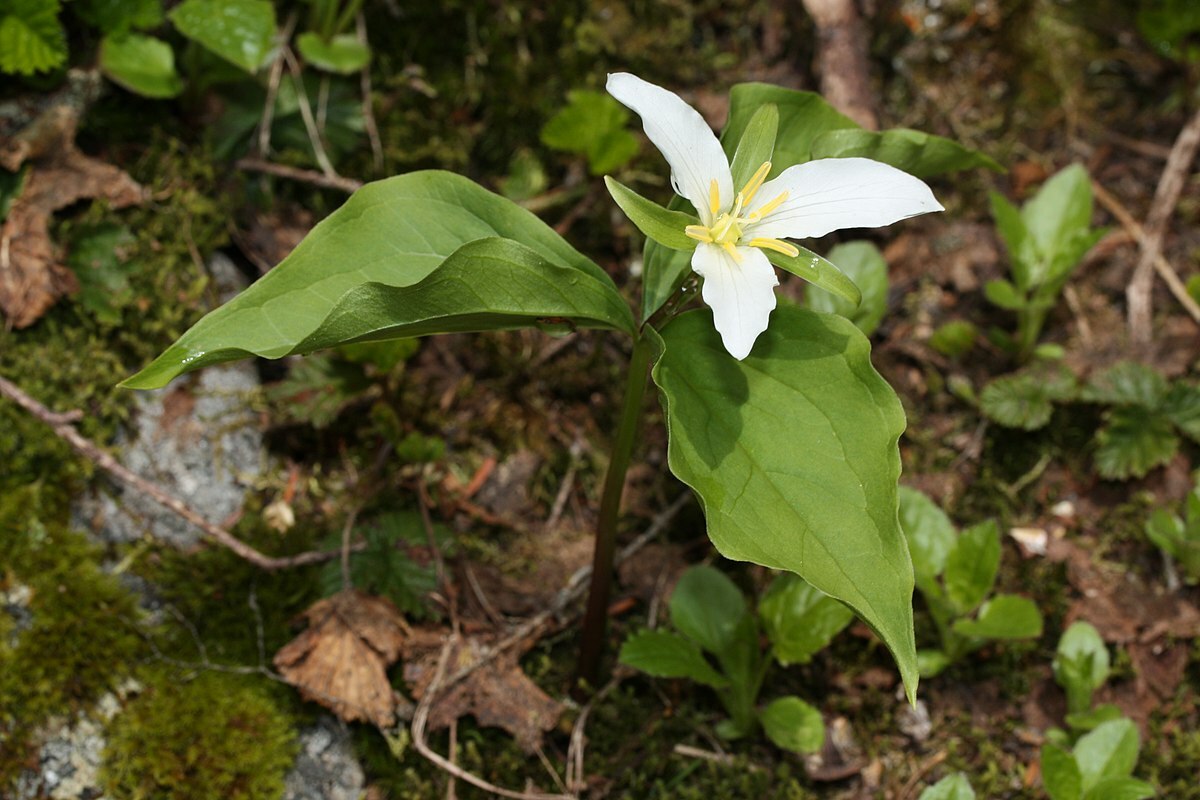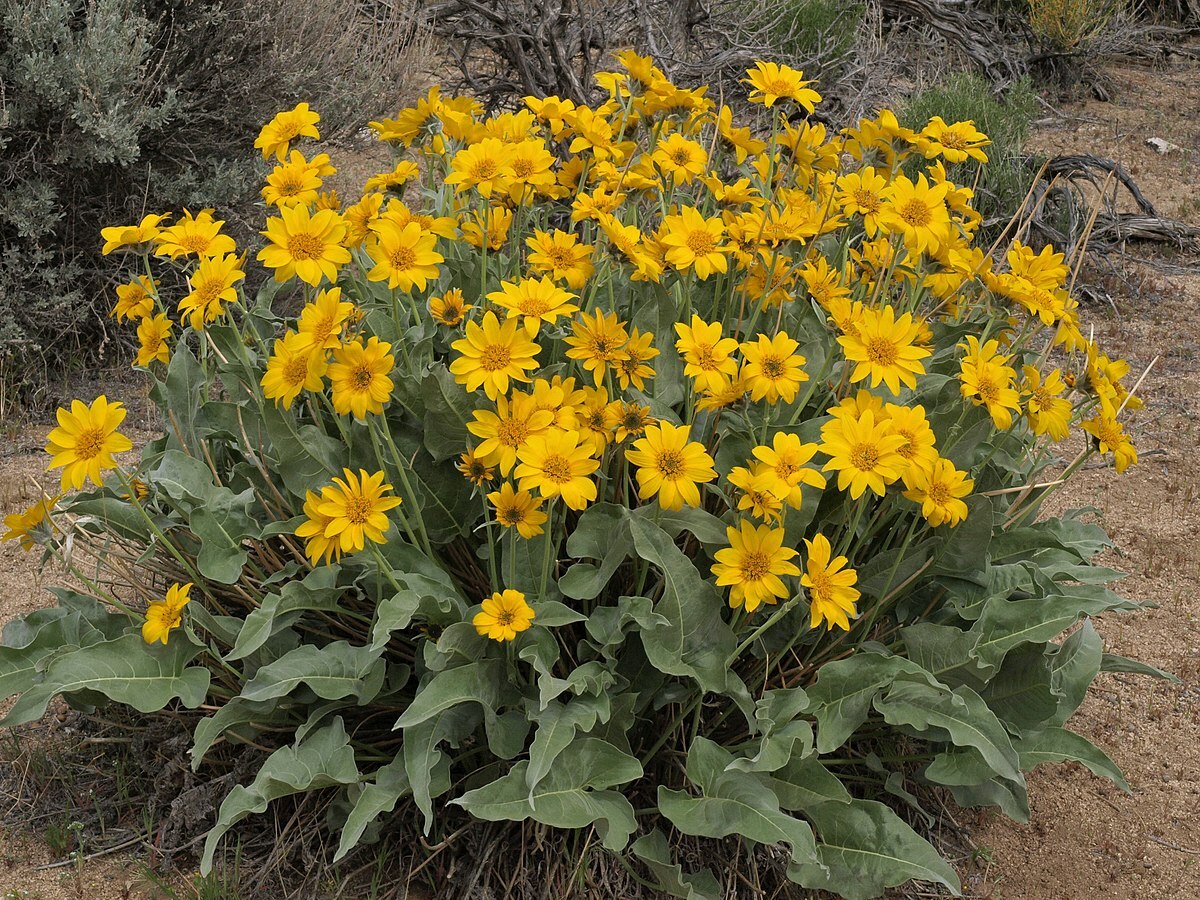The first week of May is National Wildflower Week!
To celebrate, we are highlighting three native wildflowers from different regions of the country in a four-part scavenger hunt series. If you live in the Pacific Northwest, we challenge you to visit your local National Forest this spring and find these three native wildflowers.
An important reminder before you get started. We often want to save the beauty of flowers by picking them, but it is important that we leave flowers for wildlife that depend on their seeds, nectar, and pollen for food. Save wildflowers’ beauty by taking a photo, not taking the plant.

Photo by Walter Siegmund.
Western White Trillium
Trillium ovatum
- What I look like: The Western White Trillium has a short, stout stem with three broad leaves surrounding a central white bloom. As the flower ages, its color changes from white to pink. The Western White Trillium can grow to be between four and twelve inches tall.
- When I bloom: February to June.
- Where you can find me: The Western White Trillium can be found throughout the Pacific Northwest, California, and the Rocky Mountains. These flowers prefer the understory of moist coniferous forests. Look for them in the shade of moist, wooded slopes and stream banks – particularly in areas where the soil is boggy in the spring.
- A fun fact about me: Trillium’s are known for their long life and slow growth. Some plants take ten years to flower from seed.
Photo by C.T. Johansson.
Giant White Fawn Lily
Erythronium oregonum
- What I look like: The Giant White Fawn Lily grows between six to sixteen inches tall and can have up to three white, lily-shaped flowers that each hang from their own steam. The center of each flower is a pale yellow. Each plant has two wide, mottled leaves at the base.
- When I bloom: March to June.
- Where you can find me: The Giant White Fawn Lily can be found at low elevations west of the Cascades in the Pacific Northwest as well as parts of Northern California. These flowers prefer partial shade and well-drained, rich soil and can be found in open forests, wooded grasslands, and gravelly prairies.
- A fun fact about me: The Giant White Fawn Lily’s mottled leaves are considered by many gorgeous on their own and make this plant a popular choice for native plant gardens in the Pacific Northwest.

Photo by Jim Morefield.
Arrowleaf Balsamroot
Balsamorhiza sagittata
- What I look like: Arrowleaf Balsamroot can grow up to two feet tall and has a large cluster of hairy, arrow leaves at its base. Each plant has several stalks topped with a single, bright yellow flower that looks similar to a sunflower, but smaller in size.
- When I bloom: April to July.
- Where you can find me: Arrowleaf Balsamroot can be found throughout the western United States at attitudes between 4,000 and 8,000 feet and is especially abundant east of the Cascades. Arrowleaf Balsamroot is a sun loving plant that can be found in a variety of soil types in grasslands, mountain fields, and open conifer forests. Pro-tip: Their bright yellow flowers make them easy to spot!
- A fun fact about me: Nearly every part of the Arrowleaf Balsamroot plant from the roots, flowers, and seeds have been used by Native American communities for centuries as sources food and medicine.
* Flowers at lower elevations will bloom sooner than flowers in cooler high-altitude environments. Check with your local U.S. Forest Service to see when flowers will be blooming locally.
Ready to start your scavenger hunt? Find a National Forest near you.
Sources and Additional Resources for Identifying Wildflowers:
U.S. Forest Service Plant of the Week
U.S. Department of Agriculture PLANTS Database
Lady Bird Johnson Wildflower Center Plant Database
Cover photo by the U.S. Forest Service.
--------
Did you learn something new in this blog post? We hope so! The ecology that binds together everything on our National Forests is a fragile web, and we at the NFF are committed to doing all we can to ensure the healthiest forest ecology we can. To do so requires the support of caring individuals like you. Will you join us to ensure this critical work continues? Simply click here to join with thousands in this important work. Thank you!

